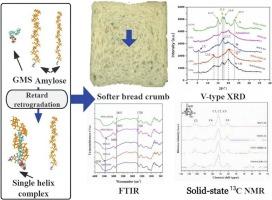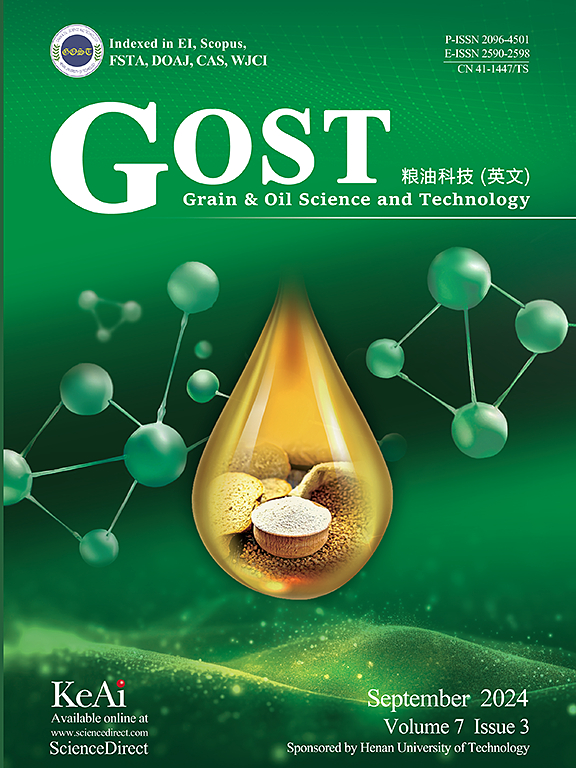Effect of glycerol monostearate on the structure and retrogradation of gelatinized wheat starch at high temperature
Q2 Agricultural and Biological Sciences
引用次数: 0
Abstract
Starch retrogradation is a primary contributor to the staling of bread. The impact of the surfactant glyceryl monostearate (GMS) on the structure and retrogradation characteristics of wheat starch gels was explored during storage at 4 °C for 2 h and 5 d. In this research, the incorporation of GMS (0.14 %, W/W, based on flour weight) significantly reduced the crumb firmness (P < 0.05). Molecular dynamics simulation vividly demonstrated the formation process of the single-helical amylose-GMS complex within 150 ns during the short-term retrogradation process of cooling the gelatinized starch for 2 h. X-ray diffraction analysis revealed that GMS slightly decreased the relative crystallinity of starch from 8.9 % to 7.8 % during long-term retrogradation. The reduction in R1047/1022 detected by Fourier-transform infrared spectroscopy indicated that GMS could reduce the degree of retrogradation. Solid-state 13C NMR analysis showed a characteristic resonance peak at 31.7 ppm for the GMS-starch complex. This study indicates that GMS holds great application potential in retarding starch retrogradation.

单硬脂酸甘油对高温下糊化小麦淀粉结构及降解的影响
淀粉的变质是面包变质的主要原因。研究了表面活性剂单硬脂酸甘油酯(GMS)对小麦淀粉凝胶在4°C下贮存2 h和5 d时结构和降解特性的影响。在本研究中,GMS (0.14%, W/W,基于面粉重量)的掺入显著降低了面包屑的硬度(P <;0.05)。通过分子动力学模拟,清晰地展示了淀粉冷却2 h的短期还原过程中,单螺旋直链淀粉-GMS复合物在150 ns内的形成过程。x射线衍射分析表明,GMS在长期还原过程中使淀粉的相对结晶度从8.9%略微降低到7.8%。傅里叶变换红外光谱检测到R1047/1022的还原表明GMS可以降低降解程度。固体13C核磁共振分析表明,gms -淀粉复合物在31.7 ppm处有一个特征共振峰。研究表明,GMS在延缓淀粉降解方面具有很大的应用潜力。
本文章由计算机程序翻译,如有差异,请以英文原文为准。
求助全文
约1分钟内获得全文
求助全文
来源期刊

Grain Oil Science and Technology
Food Science
CiteScore
7.30
自引率
0.00%
发文量
69
审稿时长
12 weeks
期刊介绍:
 求助内容:
求助内容: 应助结果提醒方式:
应助结果提醒方式:


